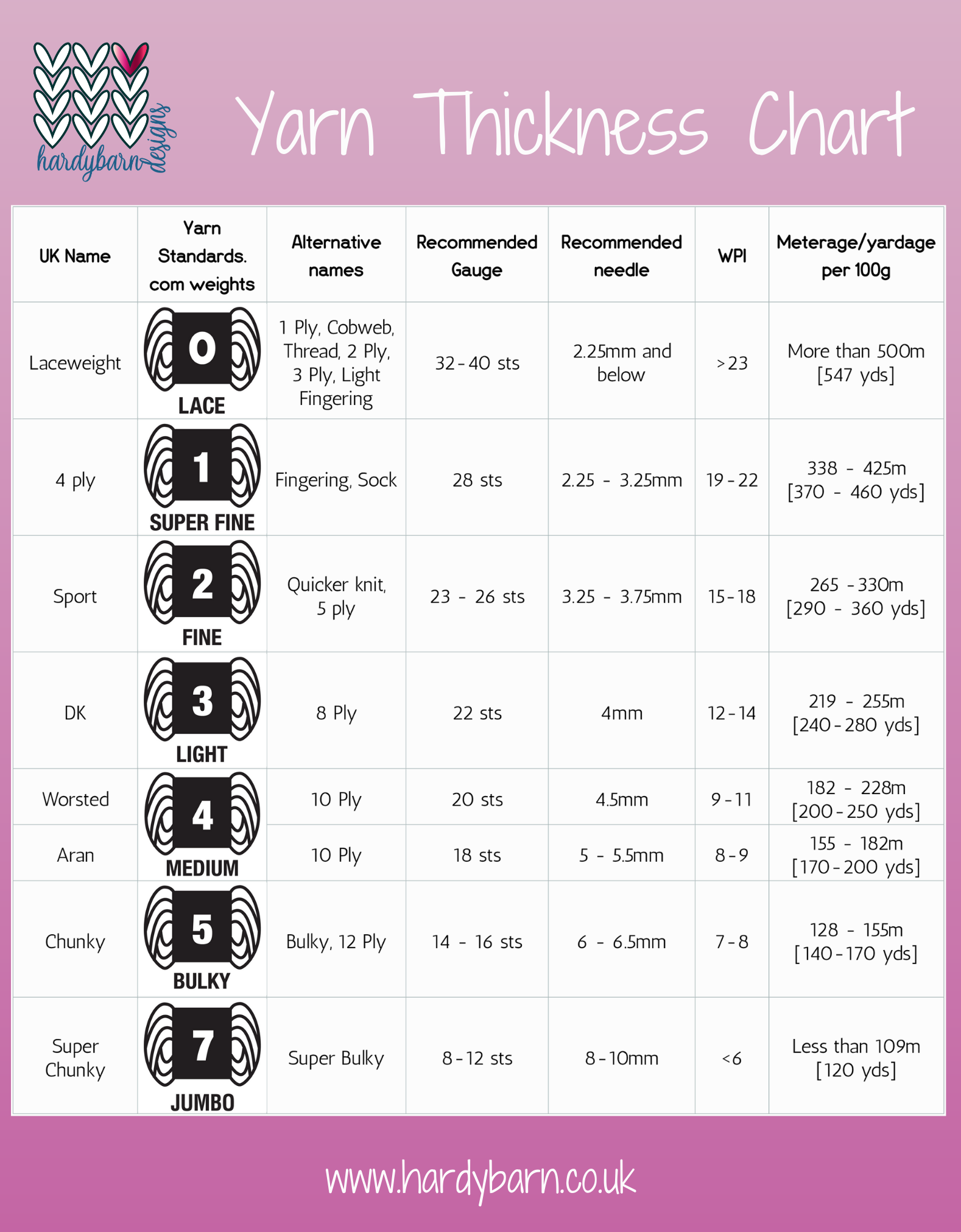Gauge Database
Let's talk about gauge. I know a lot of you dislike making a gauge swatch. I, personally, have no issues with it, as it gives me an opportunity to try out my yarn and I like to knit. It may have something to do whether we lean towards process or product knitting. If you're more of a product knitter, then I can see why you perhaps feel like the gauge swatch is a waste of time.
We invest a lot of time into our knits and it's not a pleasant feeling to get to the end of the process and realise that it doesn't fit or we've run short on yarn.
I've been making swatches for a long, long time and for most of that time, I've been writing down what the measurements are. This has saved me a lot of time on swatching. Just one thing to be aware of is our tension changes, so a swatch made 5 years ago is very unlikely to be exactly the same as what we would be knitting now.
Let me give you an example of where this database comes in handy. I'm making a shawl and the gauge is 20 sts in 10cm [4"]. The size isn't the most important part for a shawl because, if it's a little larger or smaller then it's still going to work as intended. If my yardage was limited then that's another thing but if I have plenty of yarn, then I can check my database and see what I've worked before that was 20 sts in 10cm [4"]; especially, if it's something similar and I'll just use that needle. No swatching, straight on to the knitting.
There's been the odd occasion where I've used the exact same yarn again and if the swatch was done within a year or two, then I might take a punt and just cast on. For example, 2 years ago, I made a cardigan in Istex Lettlopi and the gauge was 18.5 x 26 on 4.5mm. I've just started Big Love using the same yarn and that needs a gauge of 18 x 24. It's an over-sized cardigan, so if my gauge has shifted a little in that time then it's still going to work. Incidentally, I'm saying this. I still made the swatch as this cardigan was in pattern - my gauge was 18 x 28 on 4.5mm in pattern.
Another example, I'm planning a sweater project and I want to make a swatch. I can check my database to find my closest match and make my first swatch on that needle size.
The other unintended benefit of keeping a list of your gauge is it gives you better understanding of your knitting style. I've had many conversations with knitters where they say that their gauge is, normally, the same as the pattern - that tells me that they've probably never done a gauge swatch. Even if you are an "average" knitter, the yarn will change the gauge and my gauge on the same size needles and different yarn can vary wildly and I am quite a consistent knitter.
You can discover if you're a tight or loose knitter; or, if your gauge changes depending on yarn fibre, needle type or even mood. Having a greater understanding of your gauge allows the project to have the finish that you intend.
Making your own database
How do I store my database?
For a long time, I wrote it in a notebook; then I started to get too many to find the numbers easily, so I used an excel spreadsheet for years. Recently, I've been using Airtable, as it's easier to add on my phone and you can filter it quickly to find what you're looking for.
What information to keep?
- Yarn name
- Yarn brand
- Stitches in 10cm [4"]
- Rows/rounds in 10cm [4"]
- Needle size [mm]
- Yarn weight
- Was it worked in the round?
- Stitch pattern
- Date swatch was made
- Was it a standard indie-base and which one? (this helps as a lot of inde-dyers use the same bases and you can use a swatch from one yarn brand for another, if the stats are the same)
- Was the gauge loose e.g. for a shawl?





Comments
Post a Comment